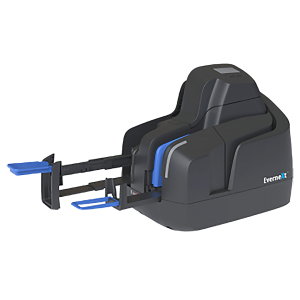
“Intelligent”
cheque scanning
Panini has been a well-known vendor of check processing equipment for decades.
When the distributed capture adventure began in the late 90's, the default design strategy for check scanners was simple: the scanner would capture the raw check images and codeline wavelengths and transmit them to the powerful host PC over a fast connection line - and the computer would handle the rest.
Today, instead, Panini offers intelligent scanners among the most advanced on the market. These scanners are able to do much of the processing on-board, thanks to a game-changing architecture we call "Everest".
-
API-free
No driver installation needed, and compatible with several hosts.
-
Simple
Intelligent scanners are easy to install and maintain.
-
Flexible
An extensive range of use cases is allowed.

Breaking out of the "Windows cage"
In 2010 Steve Jobs presented the new iPad as a post-PC device meant to change the technology paradigm and potentially displace the most common hardware architecture (based on Intel x86 processors) and its de facto reference Operating System, Microsoft Windows.
Panini designers knew the APIs that drove our cheque scanners were becoming increasingly complex, and had been built to be used only on PCs, with Windows-based applications. If Jobs’ vision proved true, within a few years our customers might be expecting to interface our scanners with several different OS’s and hosts (PC, Mac, smartphones, tablets…) and through different connections (USB, LAN, Wi-Fi…). Moreover, we would be forced to translate our APIs for these scenarios and to maintain all versions in parallel – a daunting task for a lean company.
"The fact that you just drop the cheques in the feeder, and you do not need to worry about what happens next is an advantage for everyone – bankers as well as customers.”

Panini’s formula for reliable cheque scanning
After plenty of thinking, we went back to the drawing board and realized what a PC, a Mac, an iPhone and Android device all had in common: a browser. They all could send HTTP commands to a WEB Server and receive back HTTP responses. So the obvious design approach was that Panini had to show up as a web server, which required a powerful, intelligent board capable of running it.
An extensive design phase led to a U.S. Patent in 2012: the resulting, Linux-powered scanner supported all required protocols and was also capable of non-native connection types, via USB dongle. This broke the Windows exclusivity and meant installing an API & driver on the client side was no longer needed.
Our first intelligent scanner was the mI:Deal – a flexible and user-friendly single-feed RDC platform. A few years later, intelligence was added to our highest performance platform creating the EverneXt, positioned as a cornerstone of branch transformation. More recently, our long-seller Vision X generated the Vision E.
Today, the most forward-thinking Software Vendors are integrating our Intelligent Scanners in their solutions, with Financial Institutions appreciating a new level of flexibility and efficiency.





